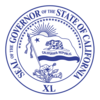Diego de Borica
Diego de Borica | |
|---|---|
| Governor of Las Californias | |
| In office 1794–1800 | |
| Preceded by | José Joaquín de Arrillaga |
| Succeeded by | Pere d'Alberní i Teixidor |
| Personal details | |
| Profession | Soldier |
Diego de Borica was a Basque[1] Spanish explorer and the seventh governor of Las Californias from 1794 to 1800,[2] and is credited by some authors with defining Alta- and Baja-California's official borders.[3] Others hold José Joaquín de Arrillaga responsible for designing that territorial division in 1804.[1] He died on August 19, 1800 in Durango, Mexico.[4]
Family
Diego de Borica y Retegui was born in Vitoria-Gasteiz to a family holding ties with the one of Fermin Lasuén. In 1780 Diego de Borica married Maria Magdalena de Urquidi, a Mexican-Basque and direct descendant of one of the founders of Durango, Mexico.[1]
Military advance as governor
As the governor, Diego de Borica and Father Fermín Lasuén determined that five more missions were needed in 1795 along El Camino Real.[5] Borica sent expeditions from four different missions to find suitable new settlements that were no more than one day's travel as military escorts were necessary.[6] By August 1796, Borica notified Viceroy Miguel de la Grúa Talamanca that no increase in troops was necessary. The first missionary site selected in 1796 was Mission San José near the pueblo of the same name.[5]
In 1795, Borica gave José Darío Argüello a Spanish land grant known as Rancho de las Pulgas. This rancho was the largest grant on the San Francisco Peninsula spanning 35,260 acres (14,270 ha).[7]
In 1797, Borica ordered the construction of a battery to protect the cove east of Point Medanos. The location initially was named "Bateria San Jose" and was chosen because the promontory overlooked San Francisco Bay and Alcatraz Island. Borica provisioned the unit with five brass cannons.[8]
On orders from Viceroy La Grúa Talamanca, Borica established a school grounds at the center of Villa de Branciforte in 1797. Also in 1797, he granted José María Verdugo's retirement.[9] Verdugo was the grantee of Rancho San Rafael.
Before stepping down as governor, Borica recommended reappointing José Joaquín de Arrillaga to organize military defenses for California.[3]
Intellect, concerns, and initiatives
Borica was a member of the Royal Basque Society (1779-1793) and well under the influence of the Enlightenment's ideas of progress (cf. circumstances in the Basque districts back in Europe), showing a concern for the welfare of his subjects. However, his attempts to establish settlements in California—for which purpose he thought of Catalans—and launch the economic development of California were largely foiled by the Spanish Crown's failure to back up his effort.[1]
At a time when the publications of the Royal Basque Society encouraged sheep raising and wool growing, Borica fostered maximum autonomy for the Californian missions by spreading sheep among the ranchers, engaging even personally in that pursuit. He was successful during his office, but by the time of California's detachment from Mexico, flocks had diminished significantly.[1]
See also
- New Spain
- Las Californias
- History of California through 1899
- List of pre-statehood governors of California
References
- ^ a b c d e Douglass, William A.; Bilbao, Jon (1975). Amerikanuak: Basques in the New World. Reno, NV: University of Nevada Press. p. 192. ISBN 0-87417-625-5. Retrieved 16 February 2014.
- ^ Richard F. Pourade. "Governors of California: Spanish 1769-1822". The History of San Diego. San Diego History Center. Retrieved 27 September 2010.
- ^ a b Field, Maria Antonia (2010). "California Under Spanish Rule". Chimes of Mission Bells. [S.l.]: General Books. ISBN 1-153-59541-9.
{{cite book}}:|access-date=requires|url=(help); External link in|chapterurl=|chapterurl=ignored (|chapter-url=suggested) (help) - ^ Ruiz de Gordejuela Urkijo, Jesus. "Diego Borica Retegui". EuskoMedia Fundazioa. Retrieved 14 May 2014.
- ^ a b Ralph Wright (September 28, 1998). "More California Mission History: San José". California's Missions. Archived from the original on 2008-06-25. Retrieved 27 November 2010.
- ^ "Mission San José". Mission Tour. 15 May 2009. Retrieved 27 November 2010.
- ^ "Menlo Park History:Early days in Menlo Park". City of Menlo Park. 2002. Retrieved 27 November 2010.
- ^ National Park Service (2010). "Bateria de Yerba Buena, 1797". U.S. Department of the Interior. Retrieved 27 November 2010.
- ^ Manuel P. Servin (Winter 1973). "California's Hispanic Heritage: A View Into the Spanish Myth". The Journal of San Diego History. 19 (1). Retrieved 27 November 2010.

